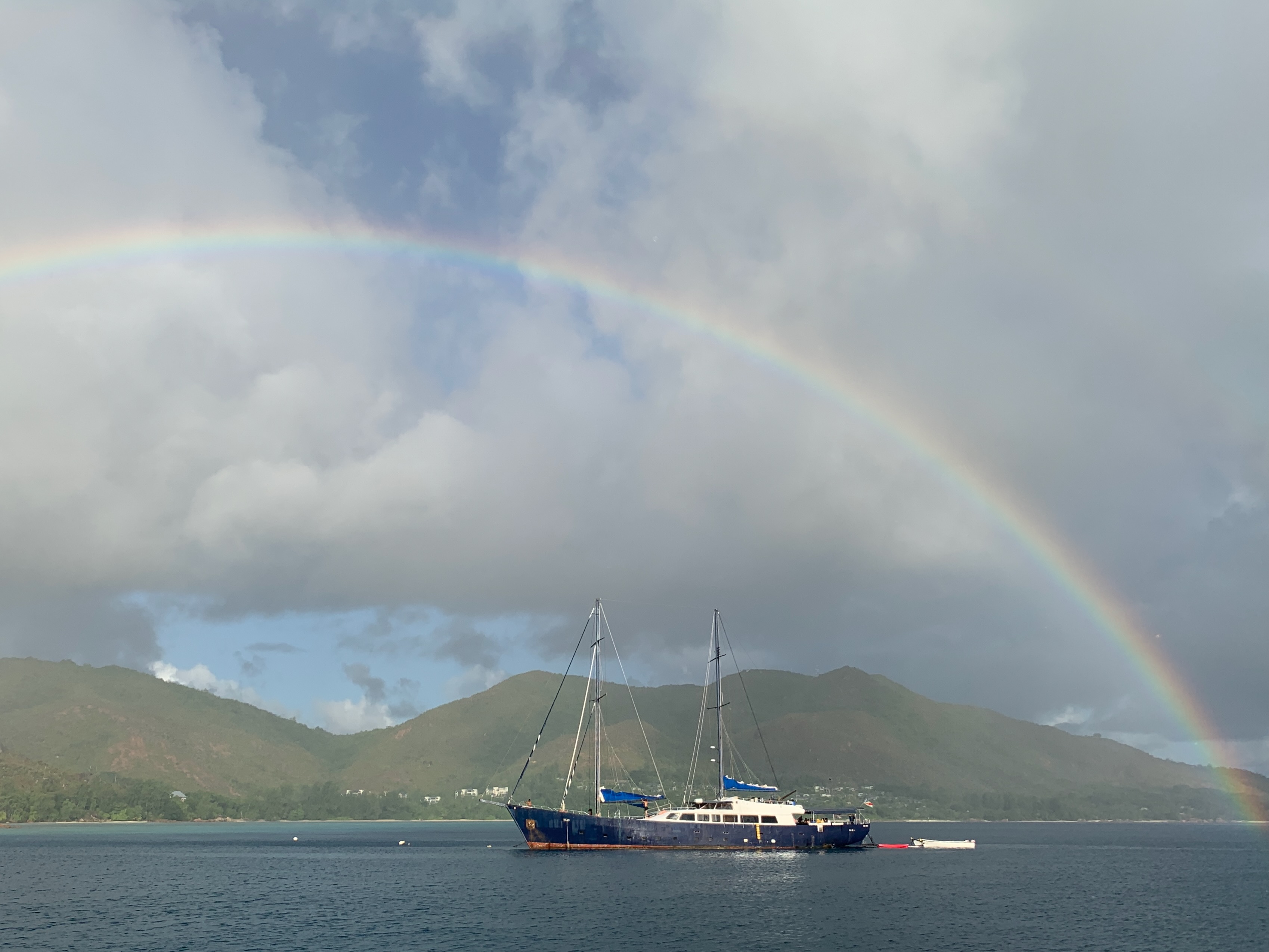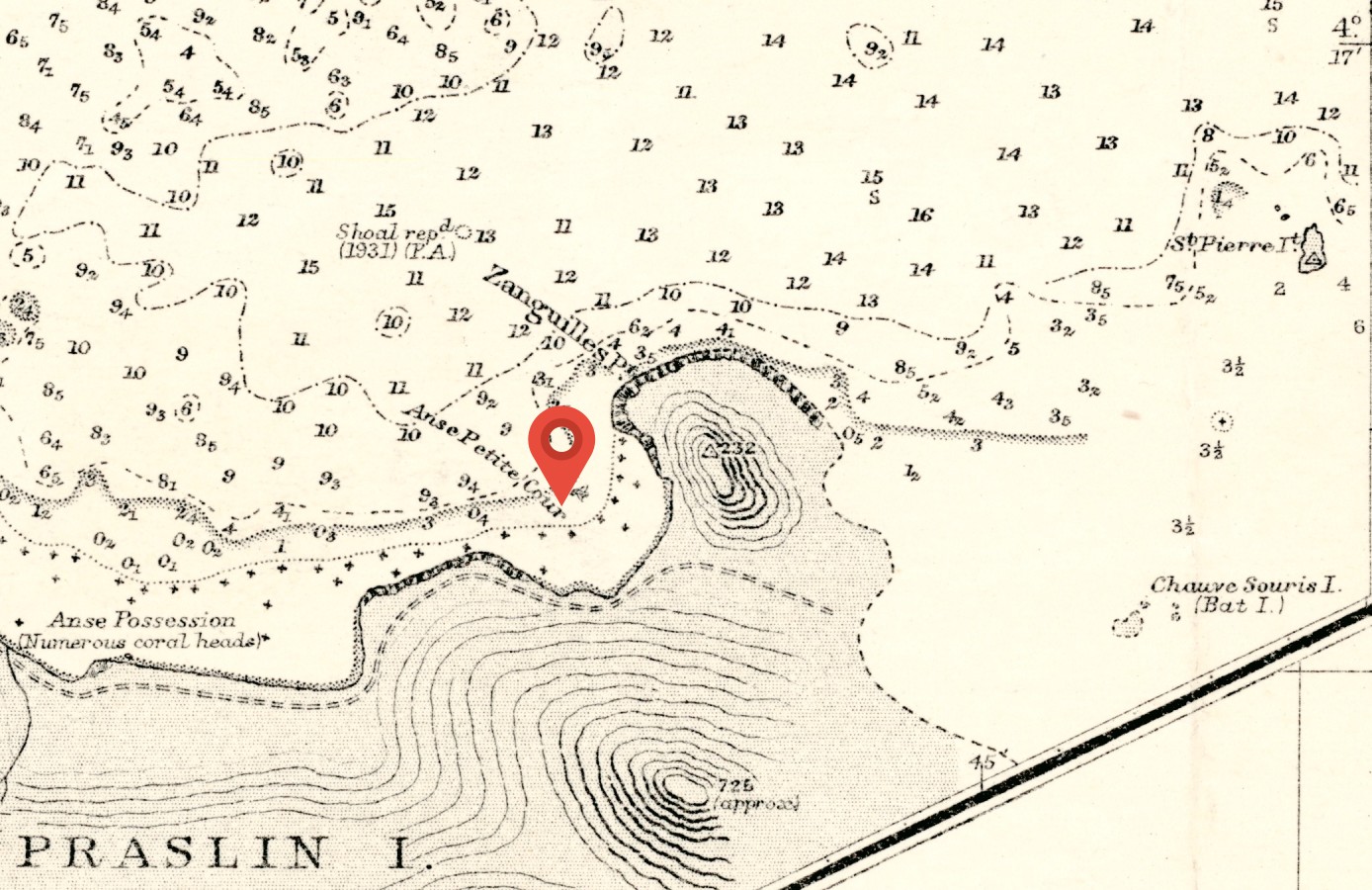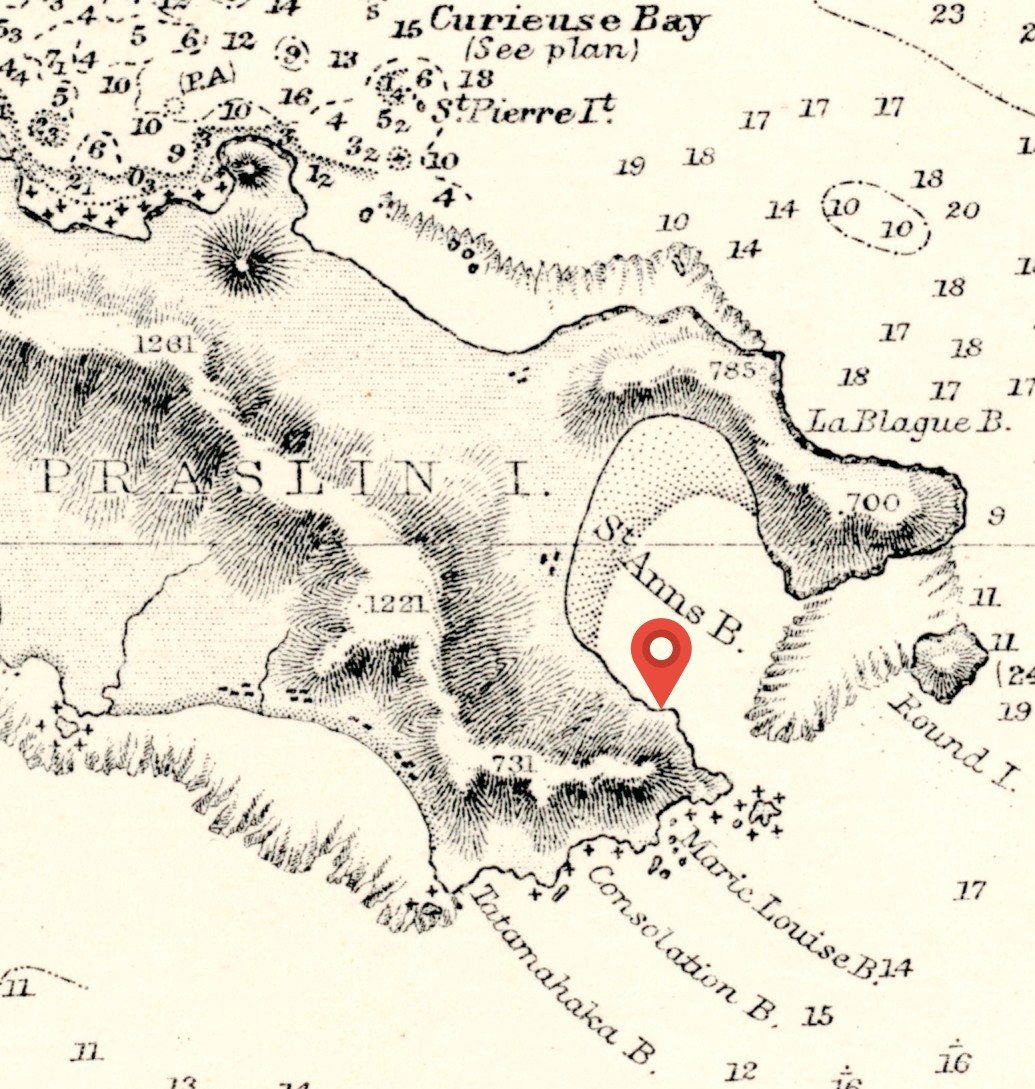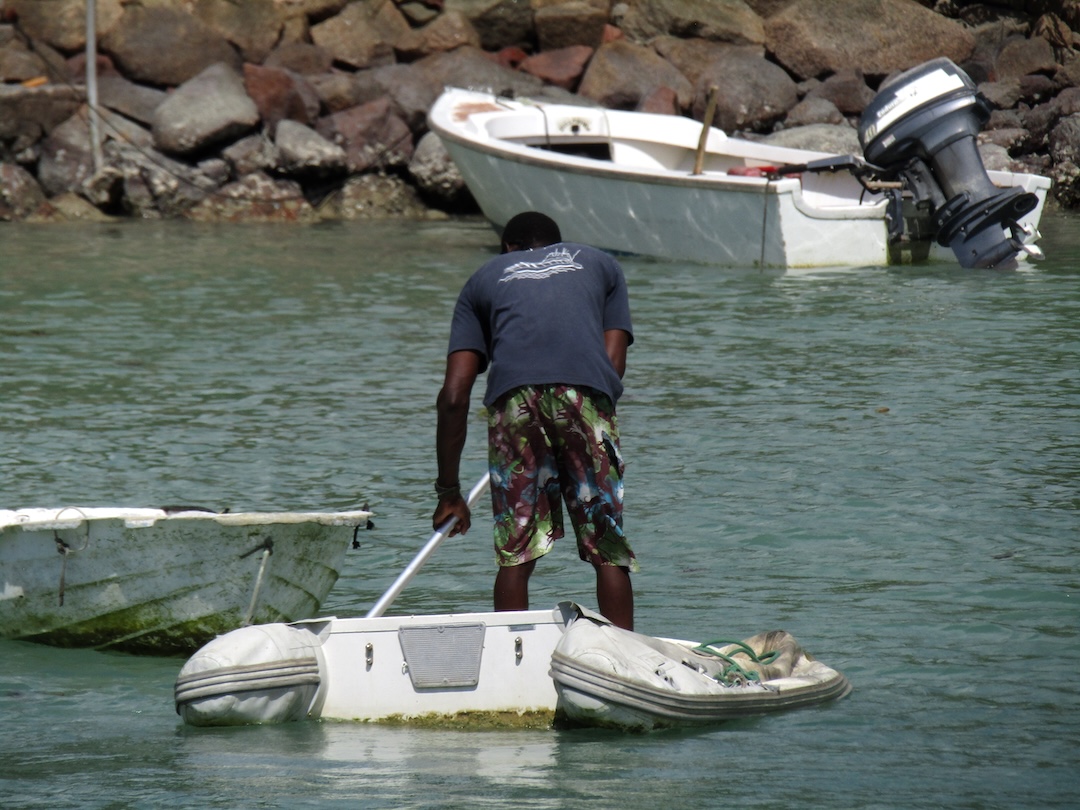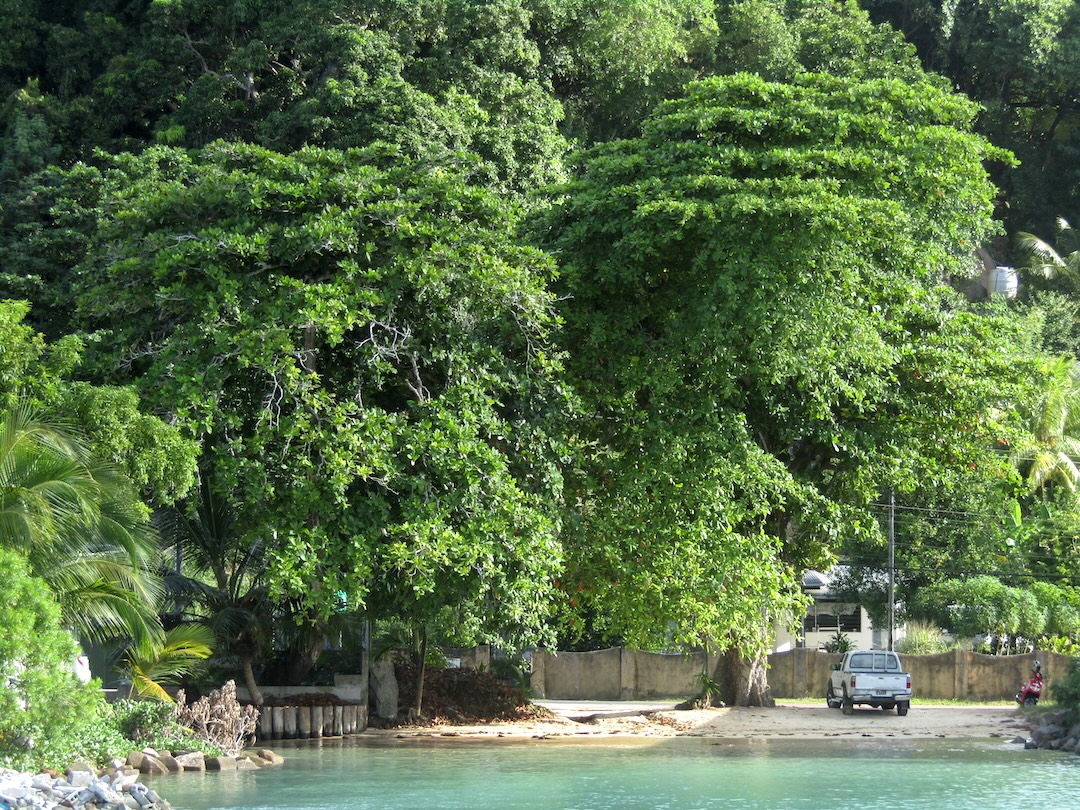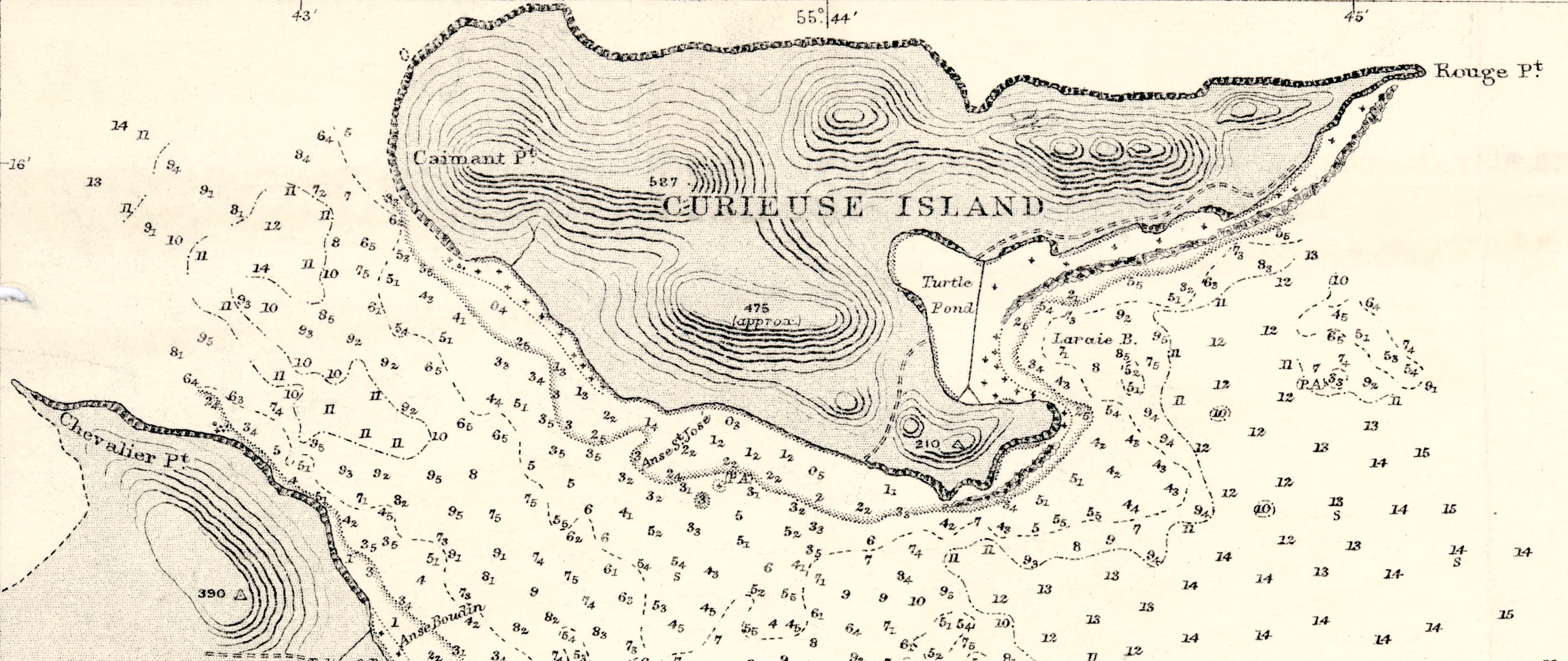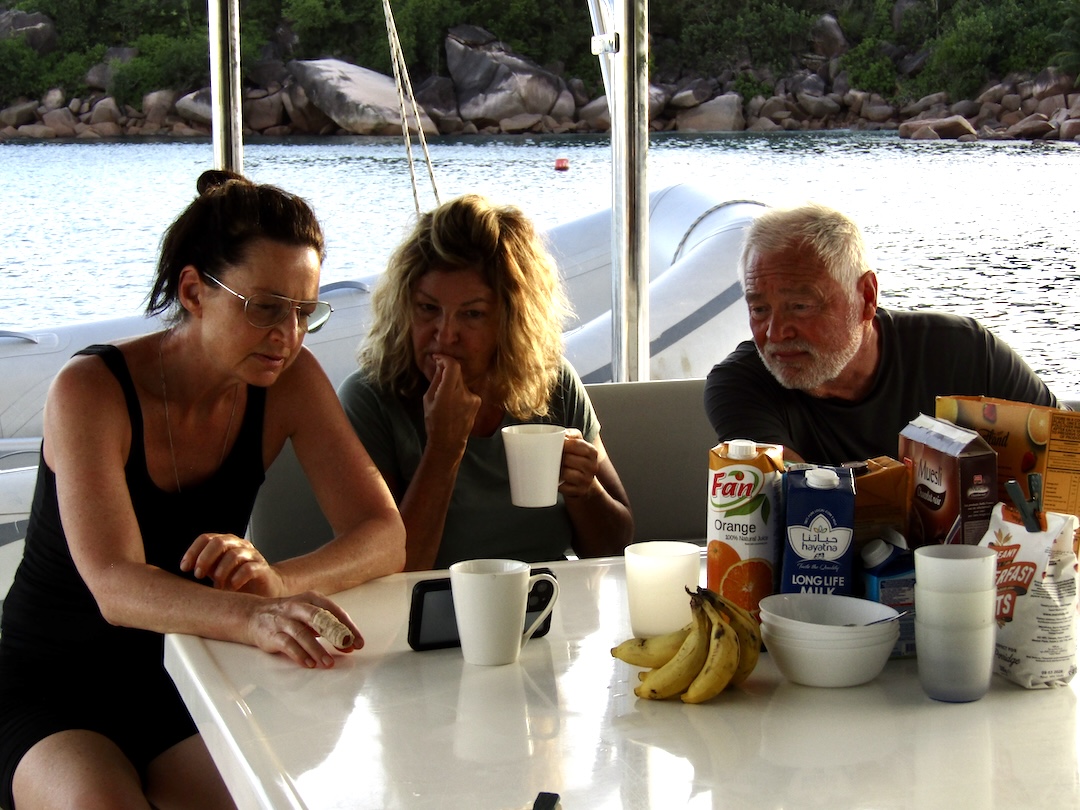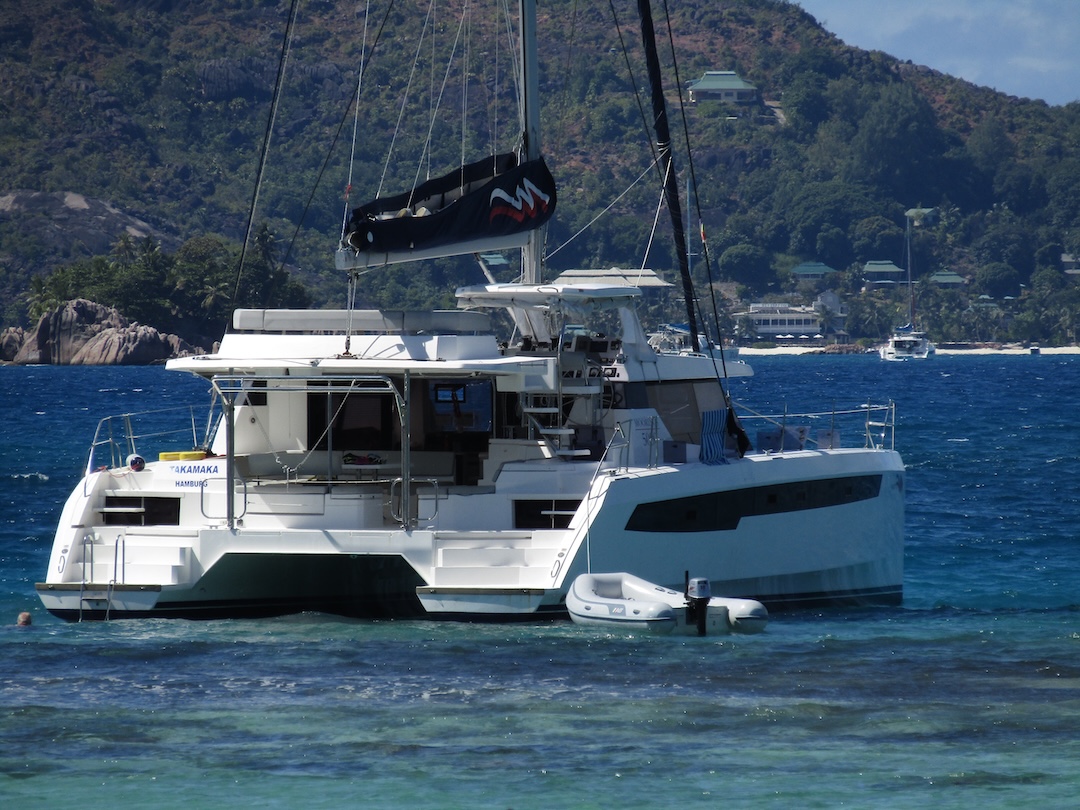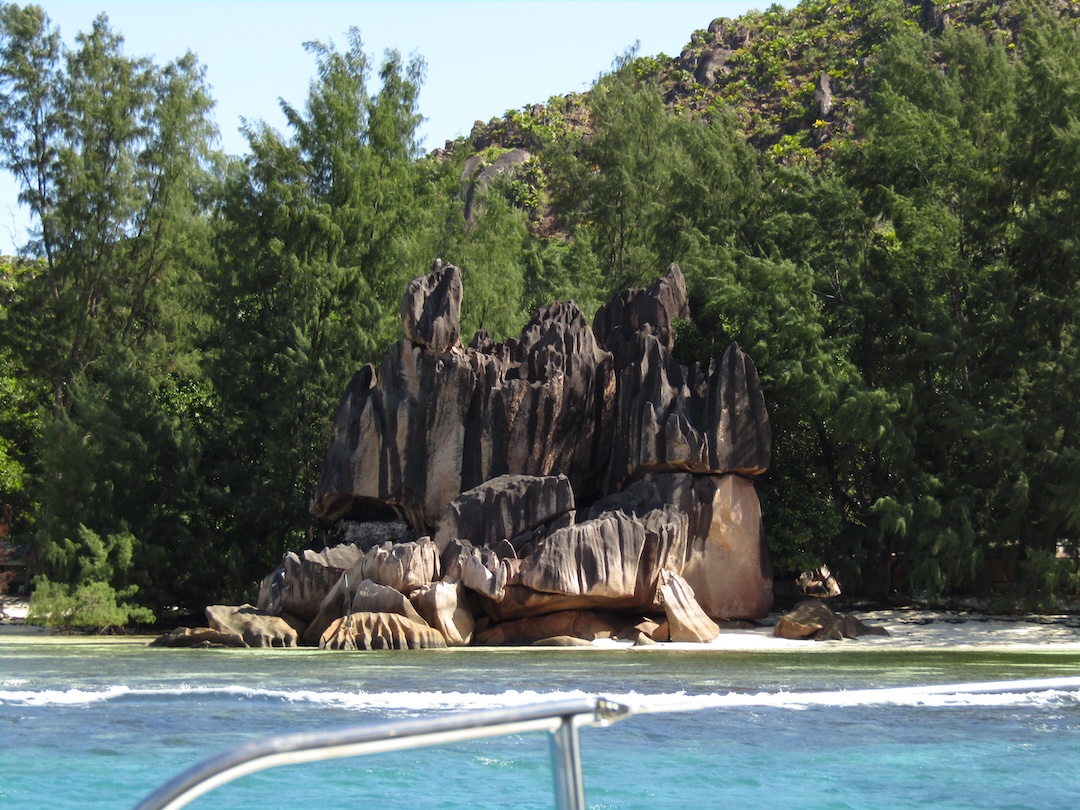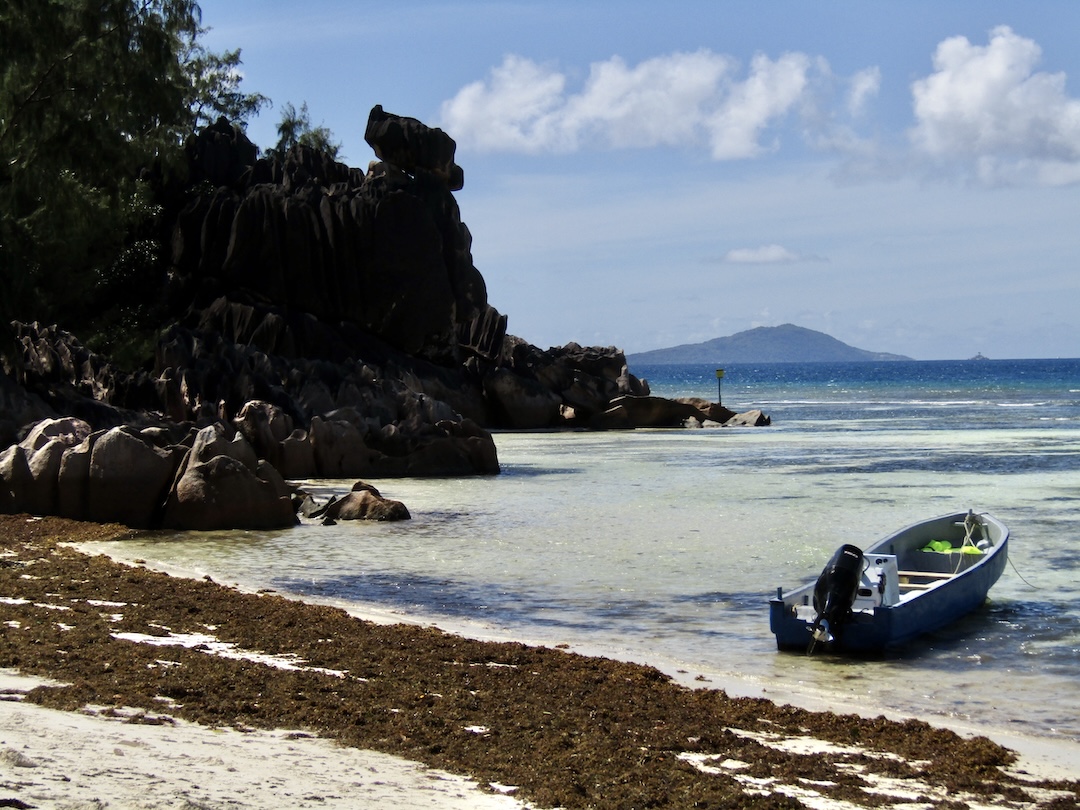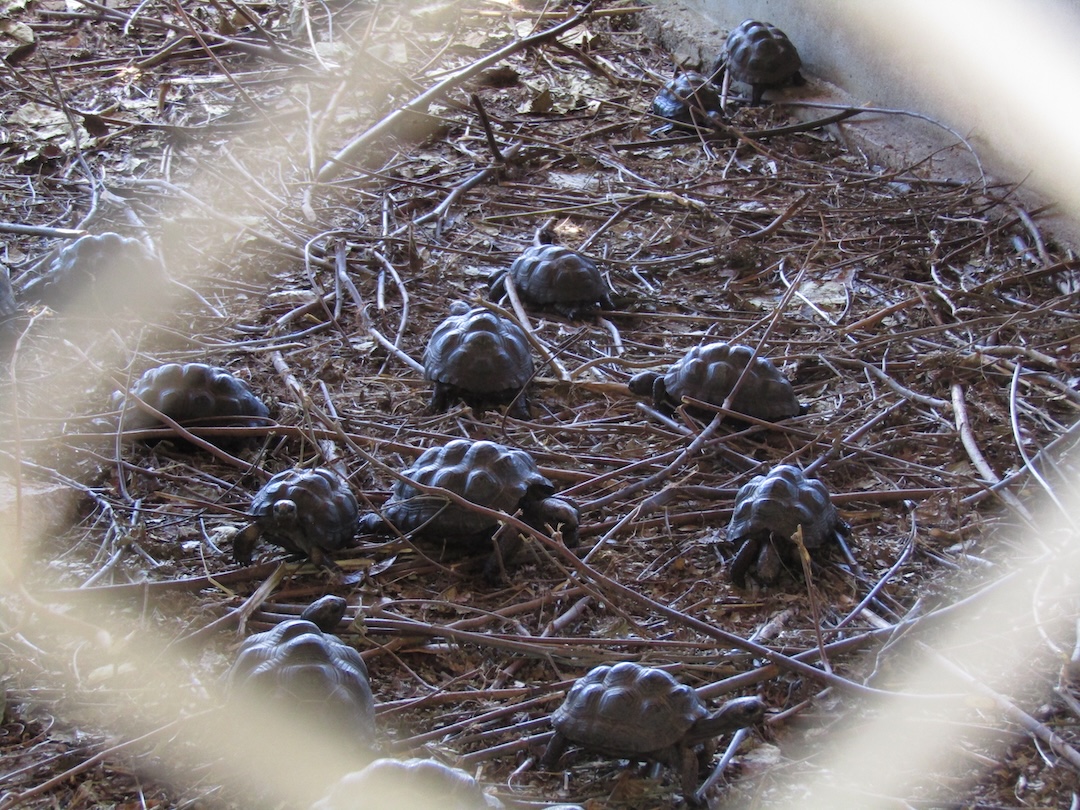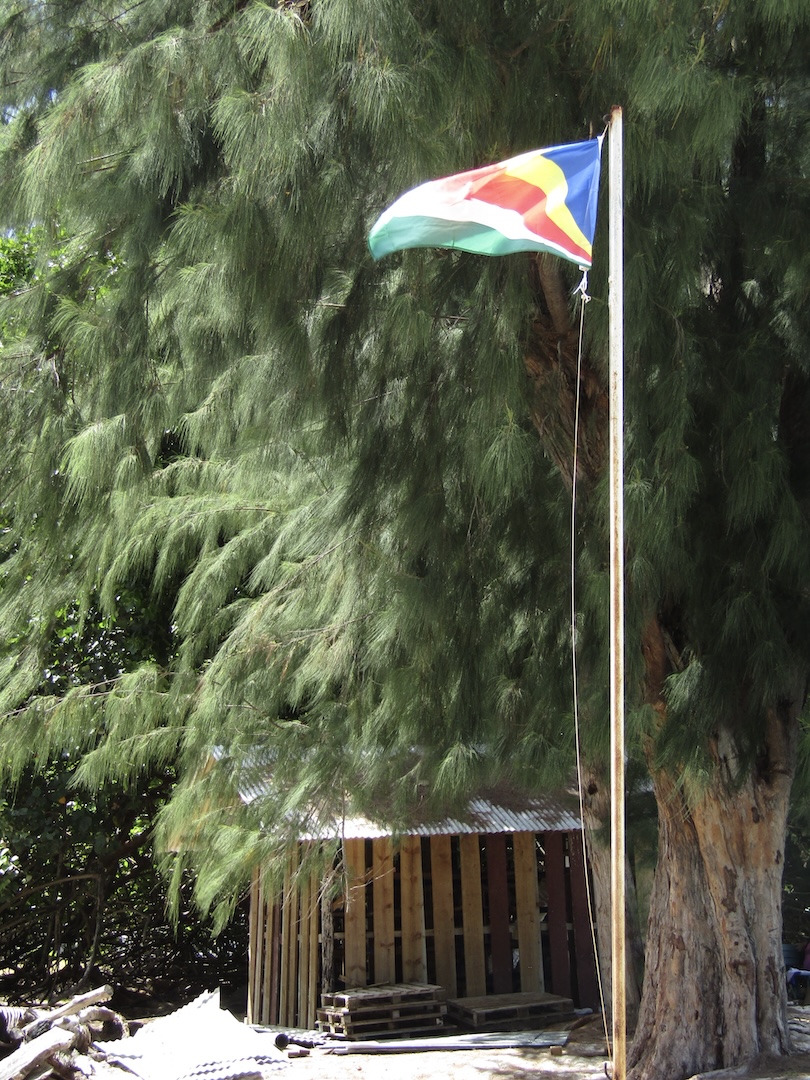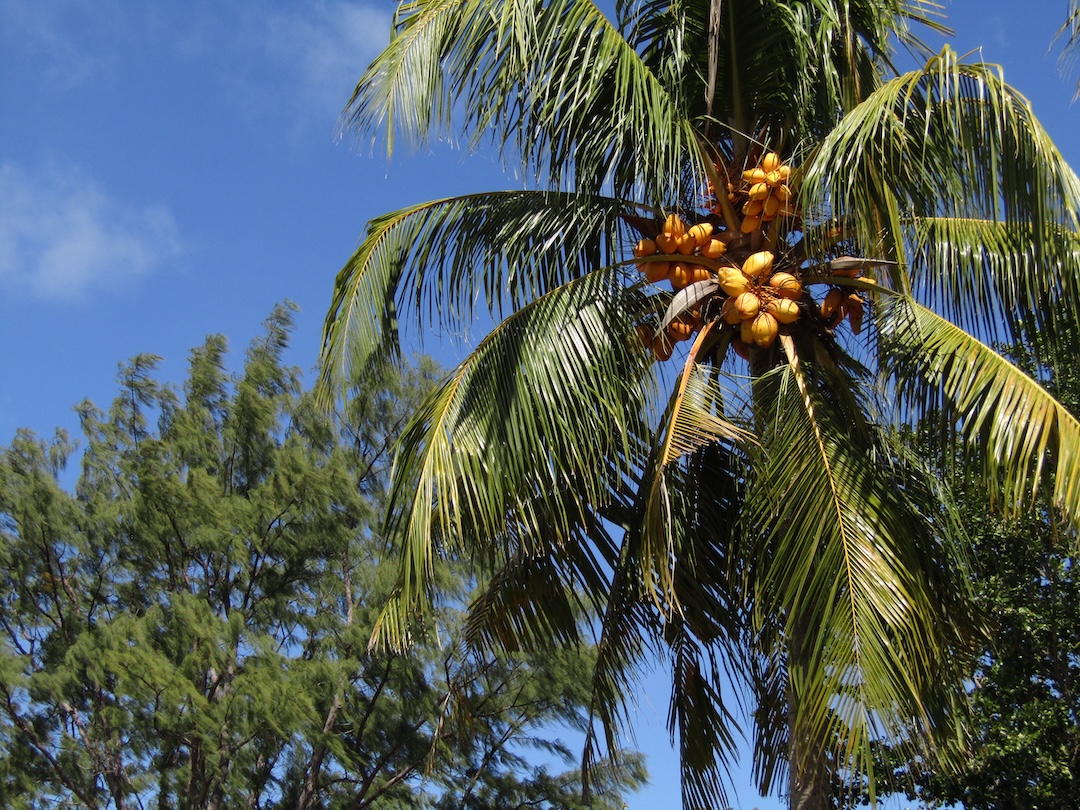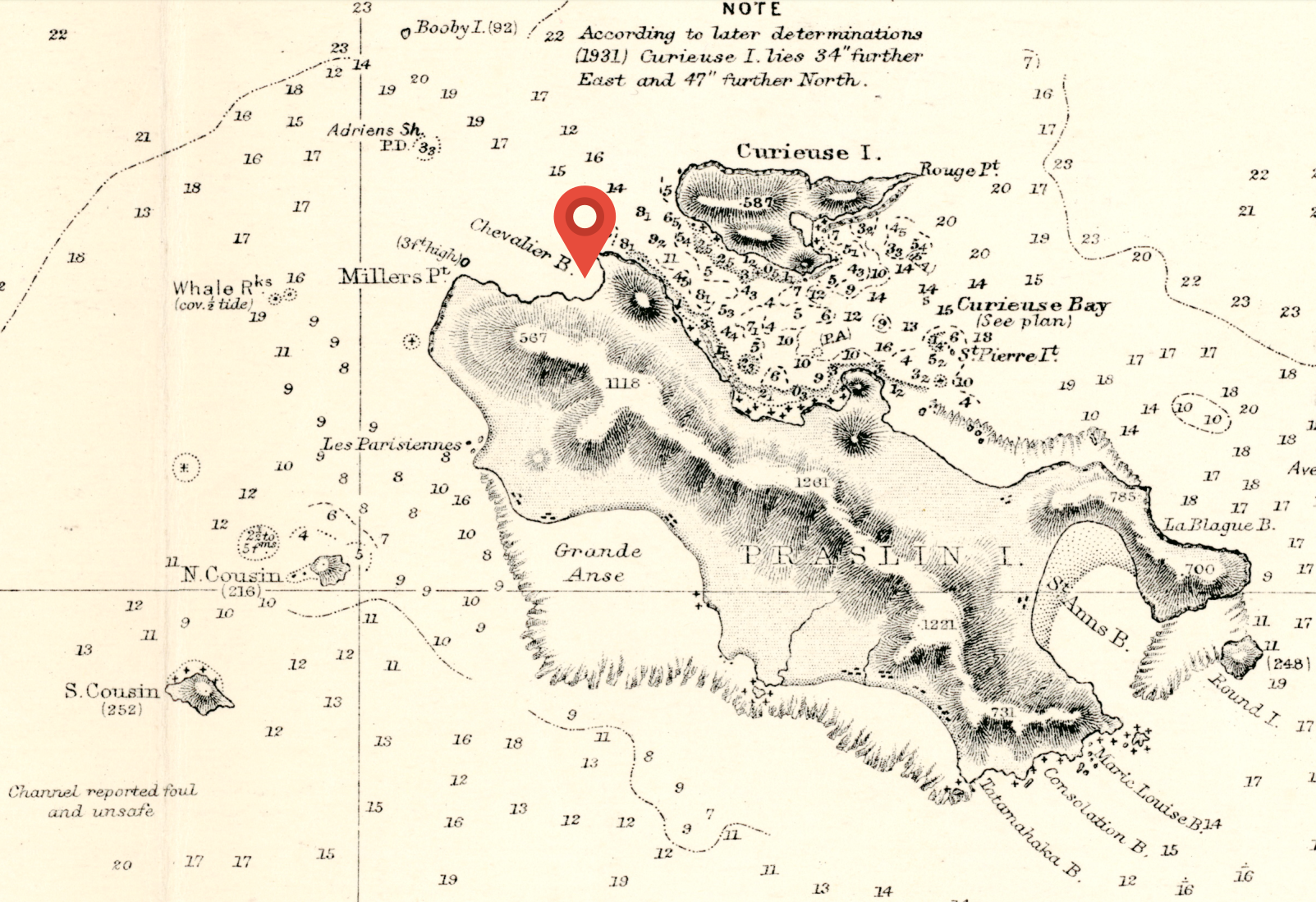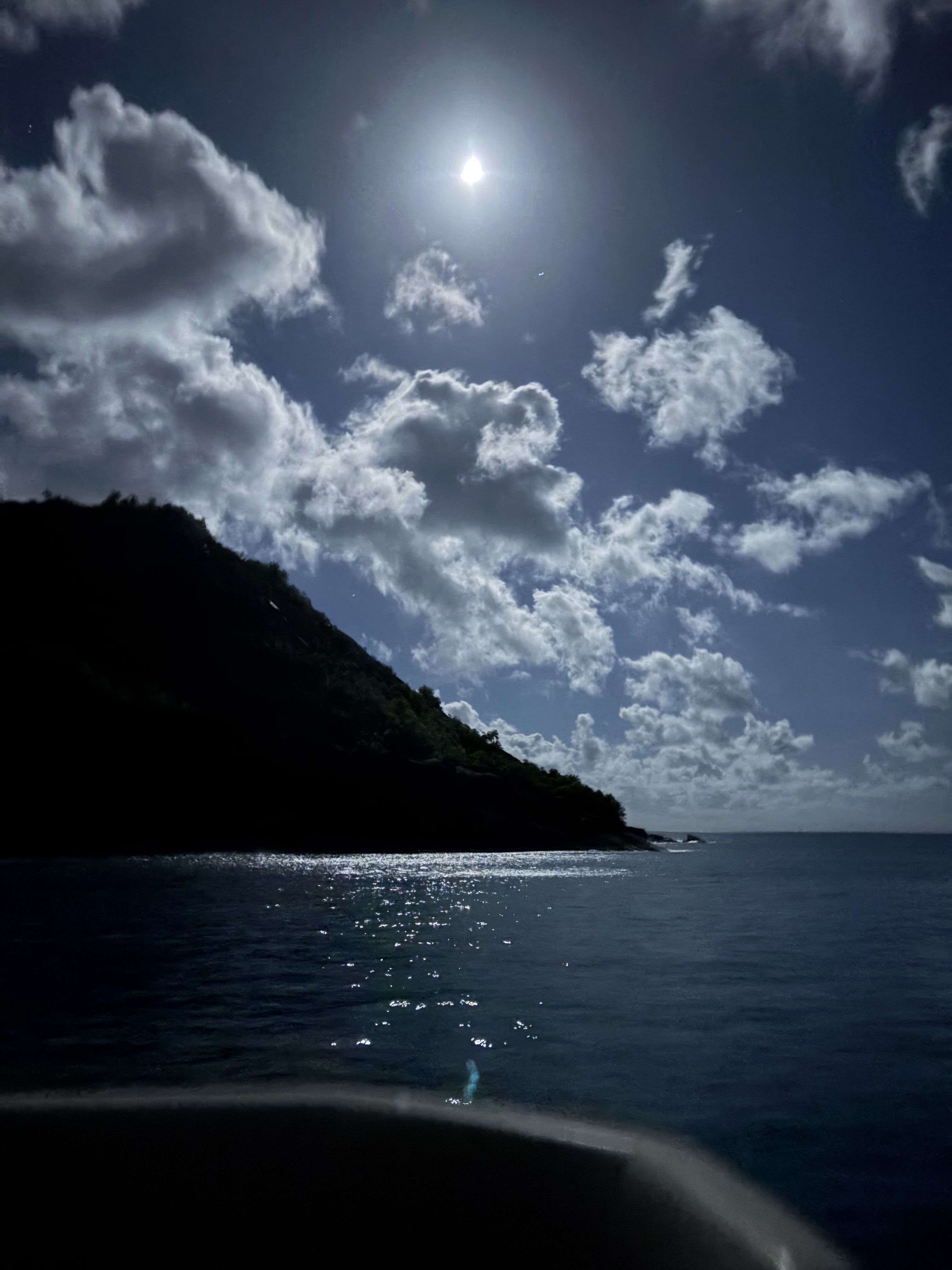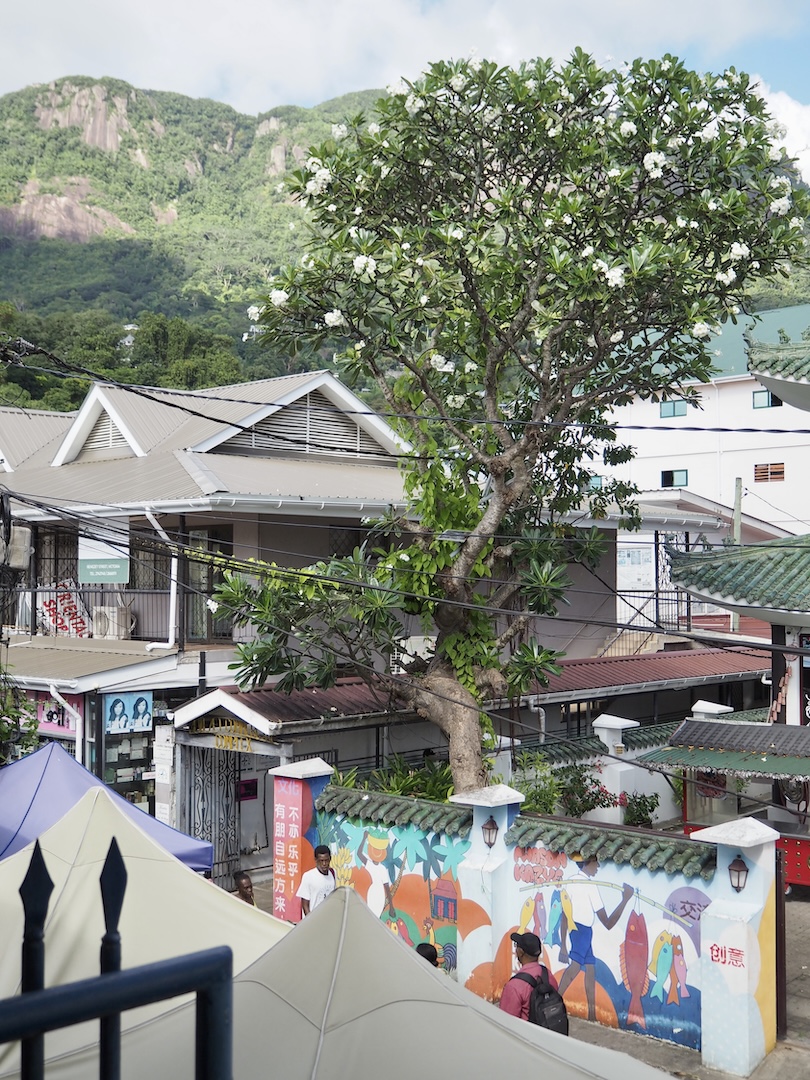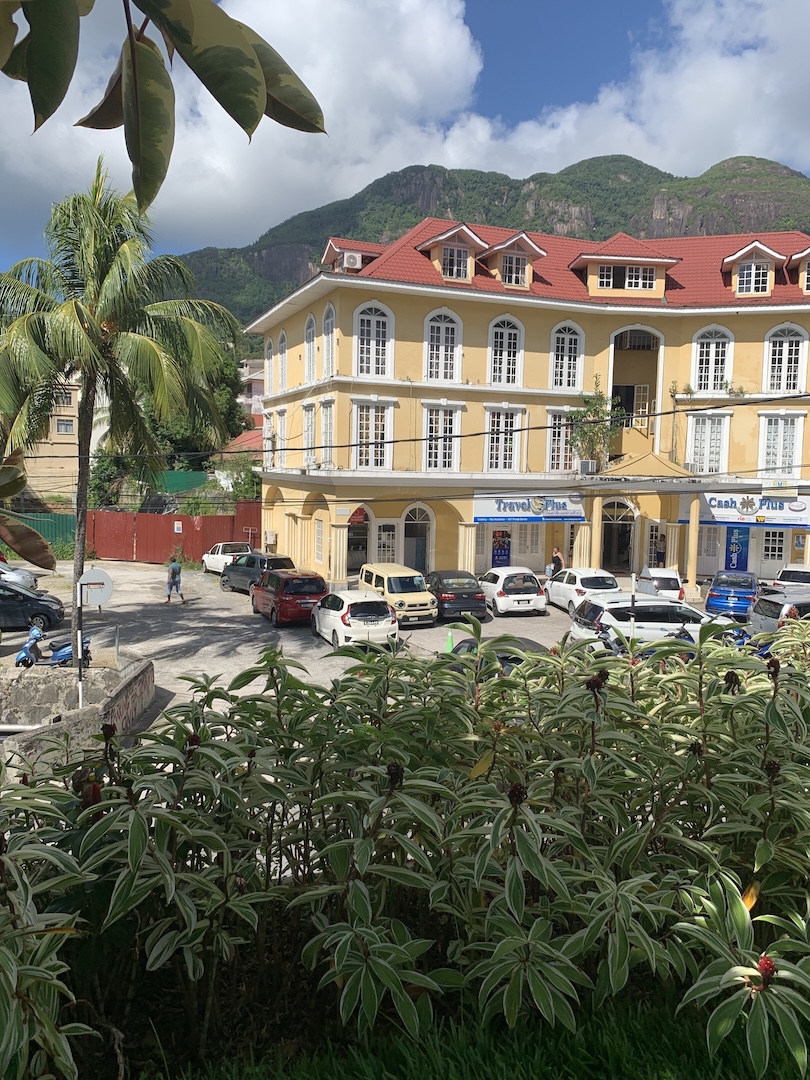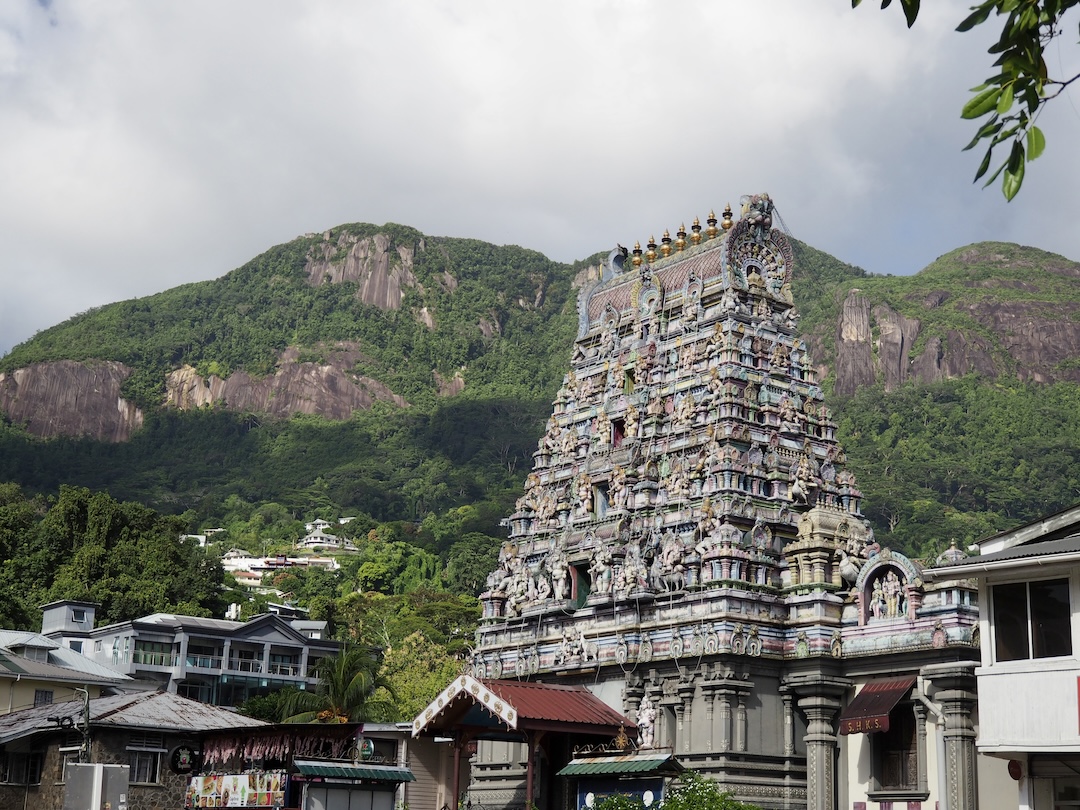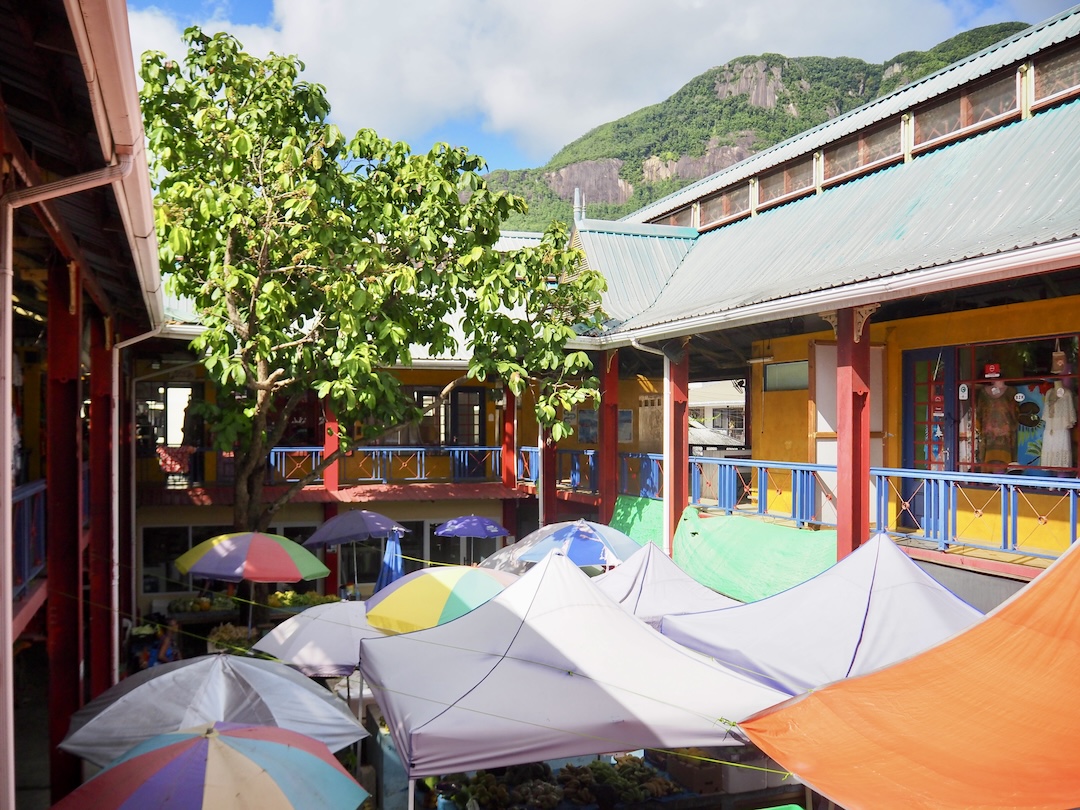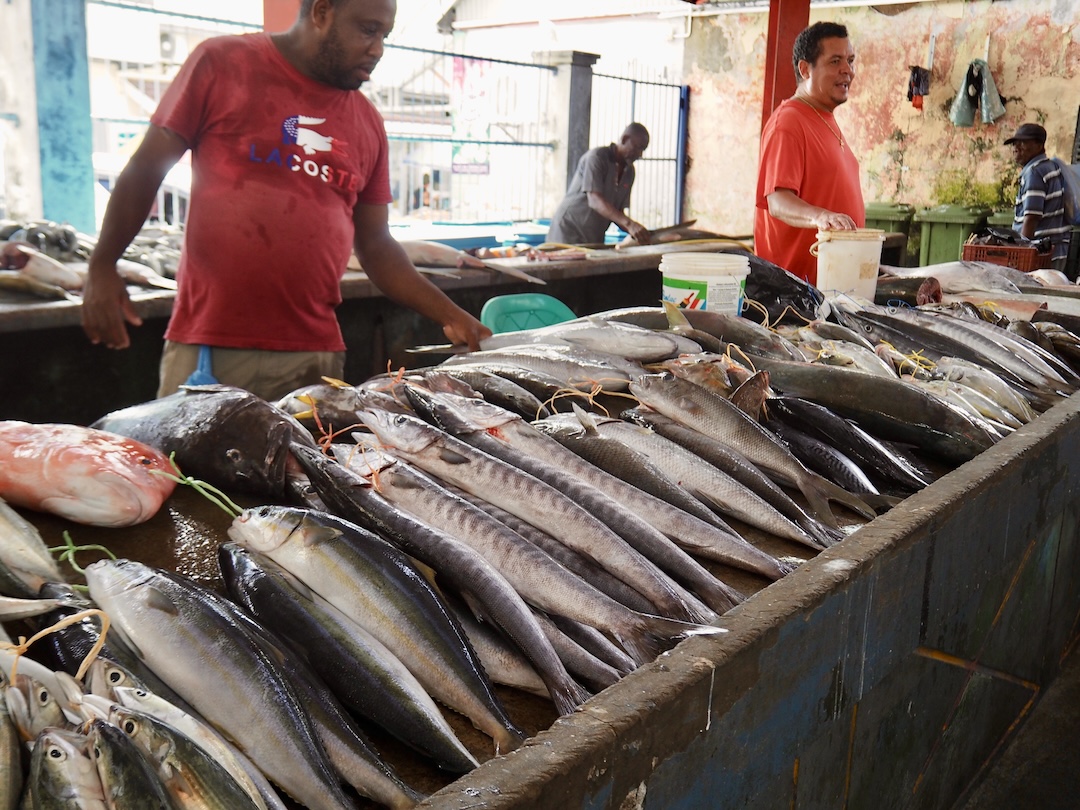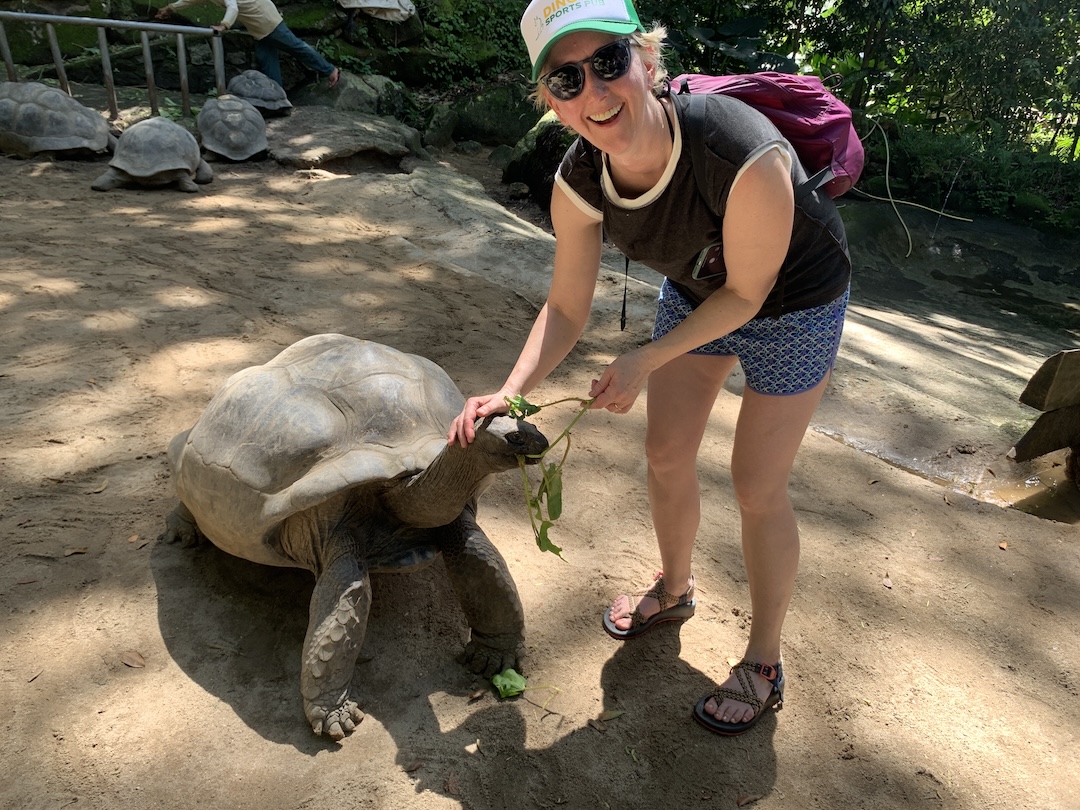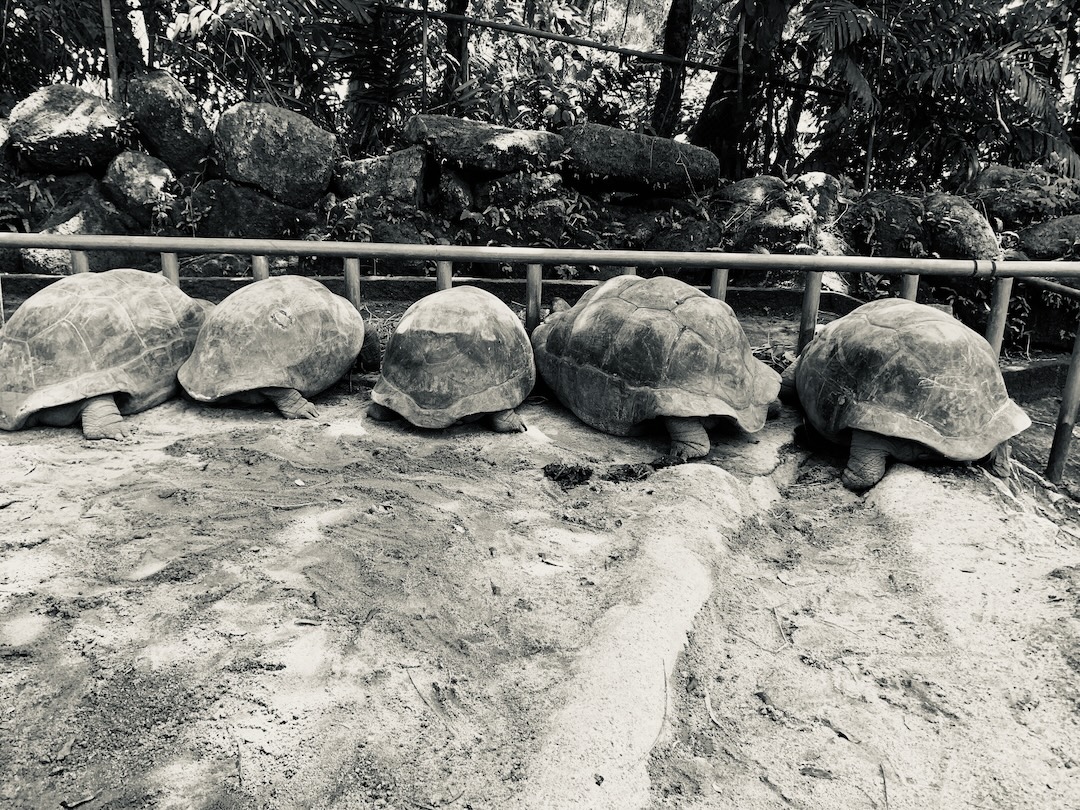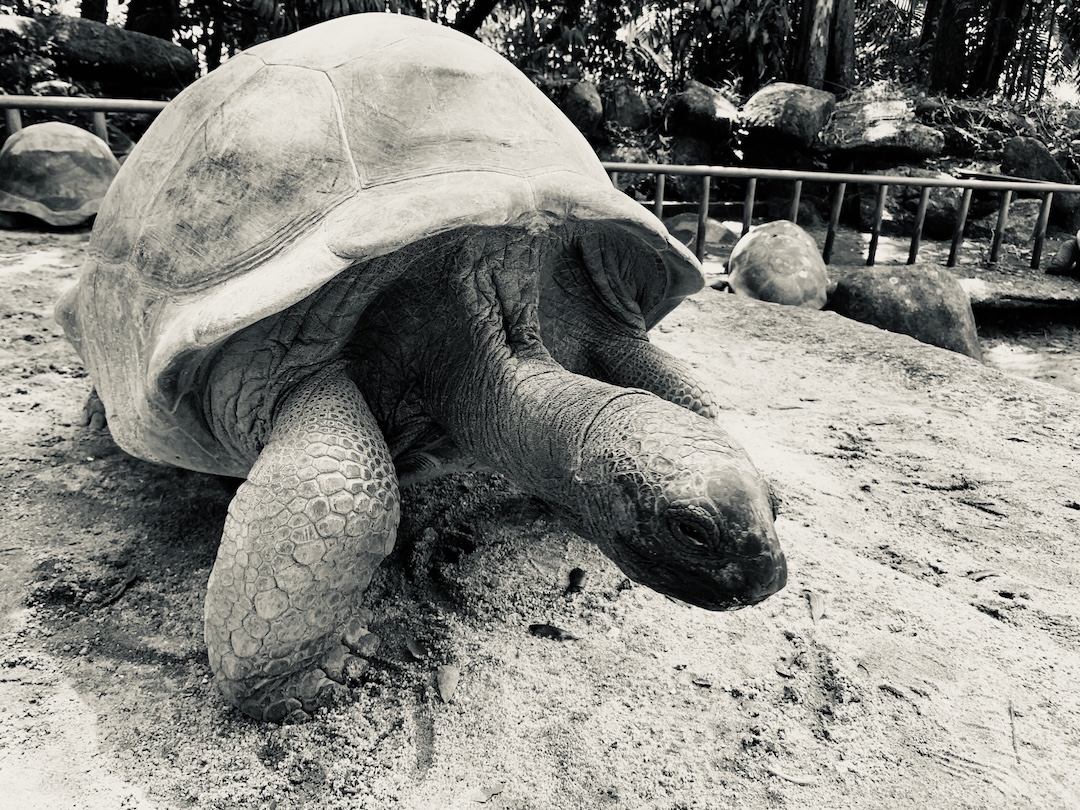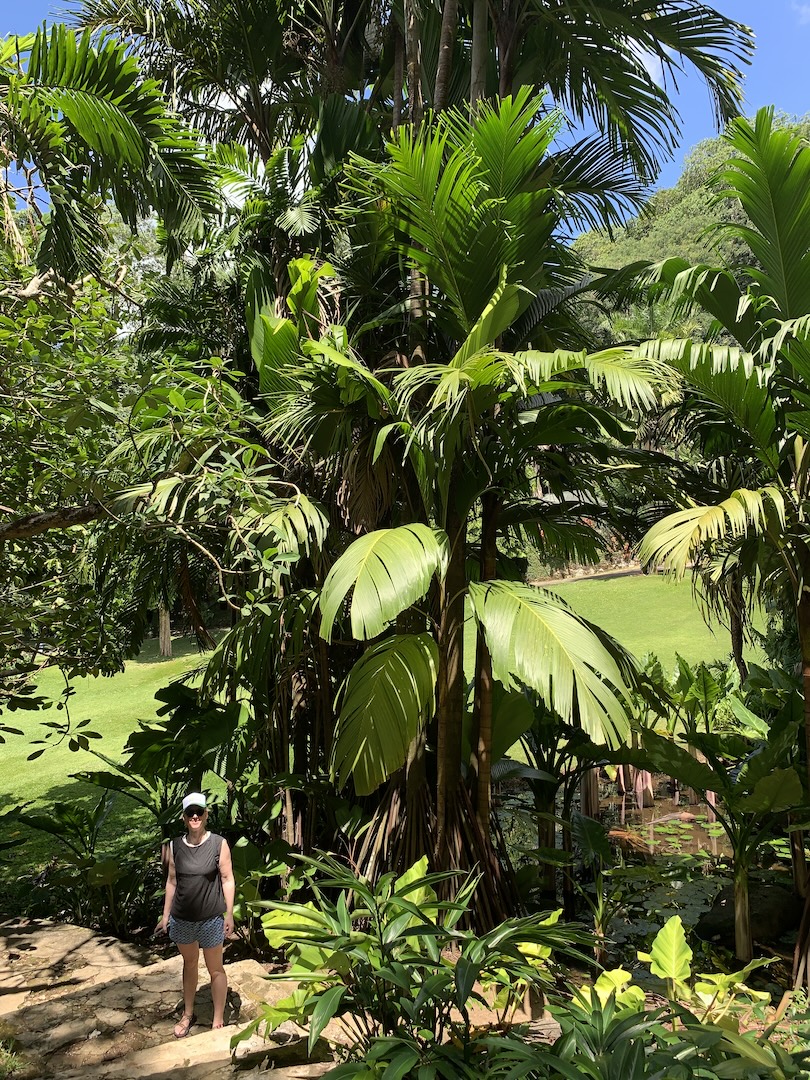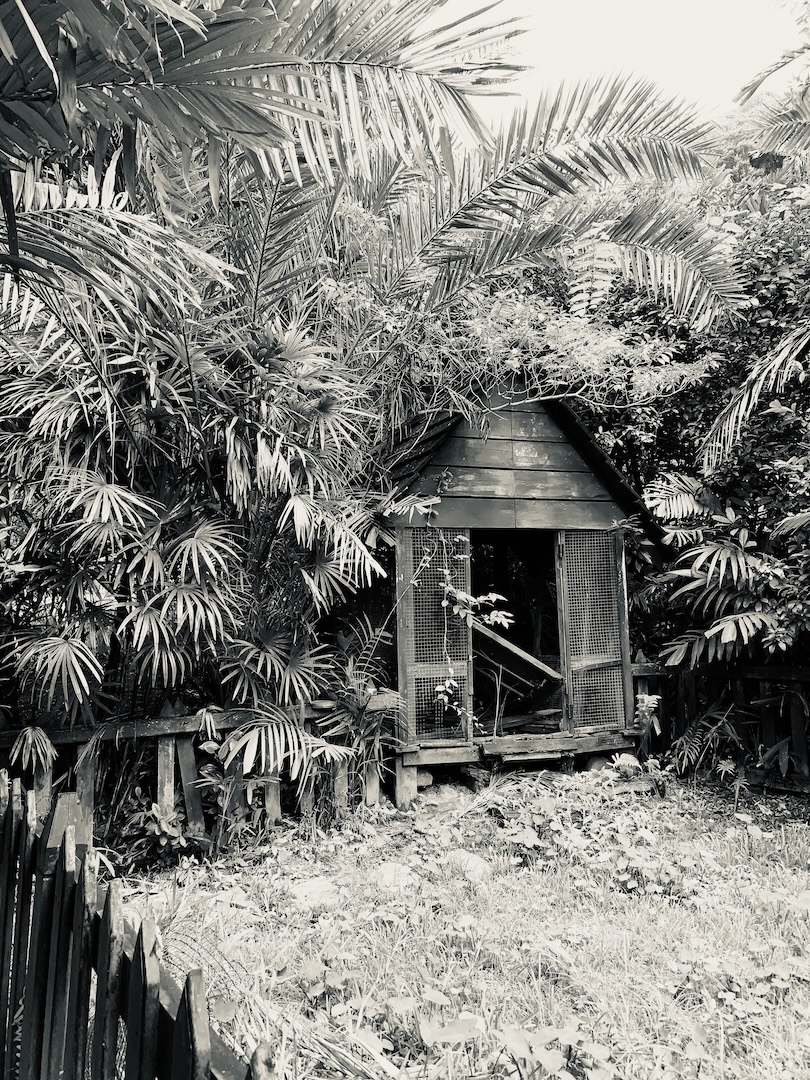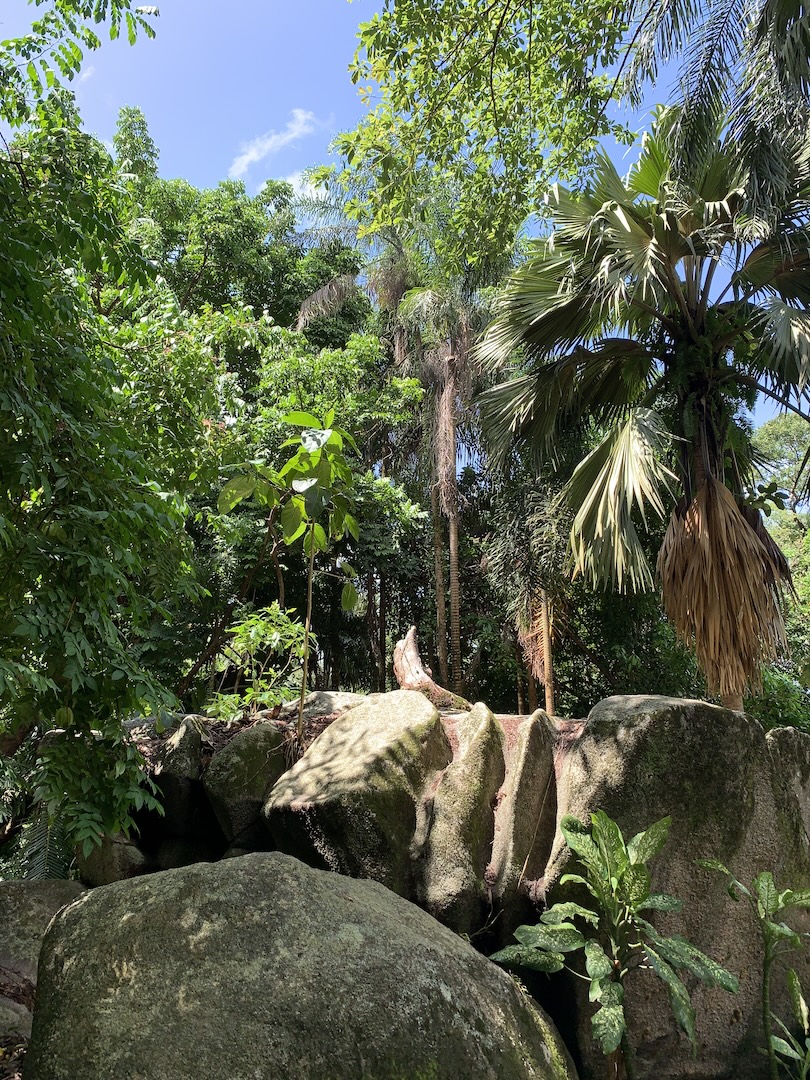We had an 8 a.m. appointment with James to take us and all of our gear to Eden Island to board the boat. We sat on the patio in front of the house and watched an impressively large local species of bumble bee wrestle nearby blossoms until James arrived at 8:15. As we wound our way down the coast we had a nice conversation, talking of weather, sports and the 2020 Seychellois election which had brought a new party to power for the first time in 43 years.
Irina (skipper), Mark (first mate) and Joe (sea chanty instructor) were already at our pre-arranged meeting spot, and we added our luggage to the tidy pile awaiting pickup by one of the several electric flatbed carts available for hauling people and provisions up and down the long floating docks. My sister and I ordered sweet and savory crepes at a nearby shop while we awaited the arrival of the last two crew members, Alisa (LPN) and Robbi (German engineer). When the crew and all their belongings were finally assembled, I rode in the front of the cart with Irina and the driver, with only room for half of me on the bench seat.
We dismounted next to the slip farthest from shore and formed a bucket brigade to quickly get all of our belongings aboard Takamaka, a Leopard 50’ catamaran. Cabins were assigned, gear was stowed, then Alisa and I walked back to the resort’s taxi stand to go into town to purchase last-minute provisions while the rest of the crew received an orientation from The Moorings’ staff and performed checks on systems and equipment.
A woman named Beryl, who seemed a little gruff when she told us she would be our shopping guide, took us first to an open-air produce market, where she pointed us toward stalls she thought had the good stuff, and away from the ones she thought were a rip-off. She said fruit was better here, but everything else we should get at the grocery store. We bought two large bunches of fingerling bananas, eight kilos of mangoes, guavas, papayas, three pineapples, lemons, limes, “local oranges” (green peel with pale yellow-orange flesh), grapefruits and four avocados the size of softballs.
Across the street was a specialty butcher shop that received the Beryl Seal of Approval, so I dodged oncoming traffic and dashed into the small, mercifully air-conditioned shop to purchase pork sausage, chicken thighs, chicken breasts, charcuterie meats, deli meats and two large wedges of basket cheese, one with pepper flakes, the other with caraway seeds. Bacon was eye-wateringly expensive, so I struck it from the shopping list and checked out, then ran through a gap in traffic back to Beryl’s taxi.
On we went to a large grocery store. Alisa and I split the remaining portions of the shopping list; I got vegetables and beverages, she got dairy, snacks and sundries. Things were going well until I learned that I had to go to a special counter to have each of the different vegetables I’d selected (red onions, yellow onions, potatoes, yams, tomatoes, one massive pale green cucumber, carrots, green beans, red and yellow bell peppers, romaine lettuce, garlic and cilantro) individually weighed and labeled. The line was 12 people deep at said special counter, so I reminded myself that I was on equatorial island time, and patience was restored. With all of my veggies properly documented, I loaded a case of Seychelles Breweries’ Seybrew Premium Lager, a case of Eku Bavarian Lager, a six pack each of Sprite and Coke, four cans of Slow Turtle Cider, and a bottle of white wine for “cooking” onto my shopping cart.
I met Alisa at the checkout lanes near the front of the store and chose the cashier with the shortest line. I didn’t understand her signals to pick a different lane and learned the hard way that I’d chosen the slowest cashier of the bunch. After an eternity of watching items slowly pass over the barcode scanner and the resolution of two discrepancies in my vegetable paperwork, we finally exited the store and met Beryl in the parking lot, who kindly helped us load everything into the back of her micro-van.
We made one last stop at a little convenience store in a vain effort to find popsicles and ice cream before returning to Eden Island. Everything we’d purchased was transferred onto a flatbed electric cart, then driven what seemed like the six miles between the shore and the boat. Alisa had forgotten her cash on the boat with which she intended to pay Beryl, so she grabbed her wallet and walked back to shore to pay our helpful and patient taxi driver. Once again a bucket brigade was formed to get all the provisions on board. Most of the storage space was in the floor of the main salon, which made it awkward to put things away with so many people standing on the hatches that covered where the supplies needed to go.
I was still arranging food items in the three refrigerators and one freezer on board when the boat began to move away from the dock. Some part of my subconscious did the math on how long it took to walk to shore and return to the boat and realized that it was highly unlikely that Alisa had made it back onboard after paying Beryl. Colleen knocked on her cabin door, and sure enough, there was no response, so it was relayed to the helm that one of our crewmembers had been marooned. Full astern all engines back to the dock, where Alisa was able to step aboard via one of the sugar scoops, then half ahead all engines around the southeast end of Eden Island through a narrow channel in the reef leading out to Cerf Passage, bound for Silhouette Island.
